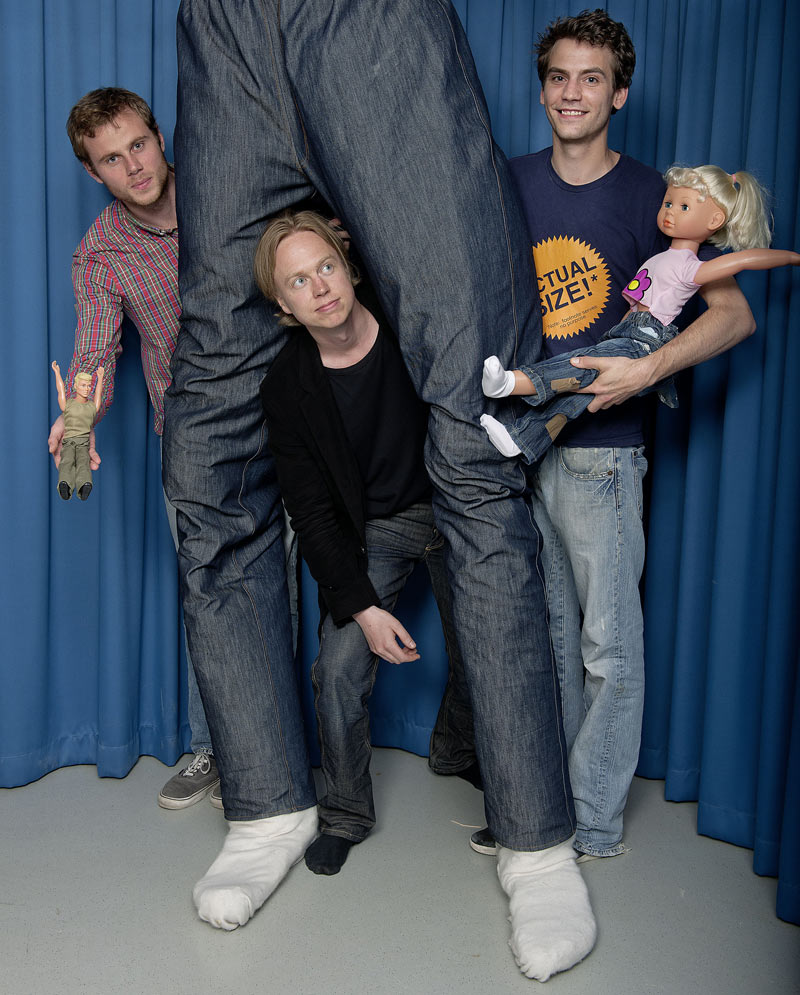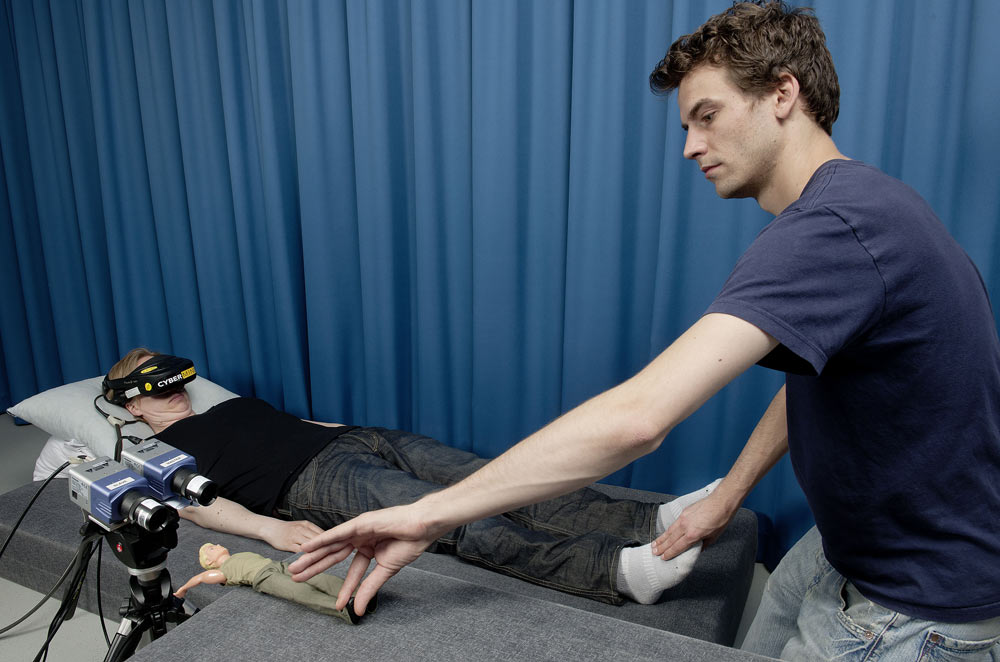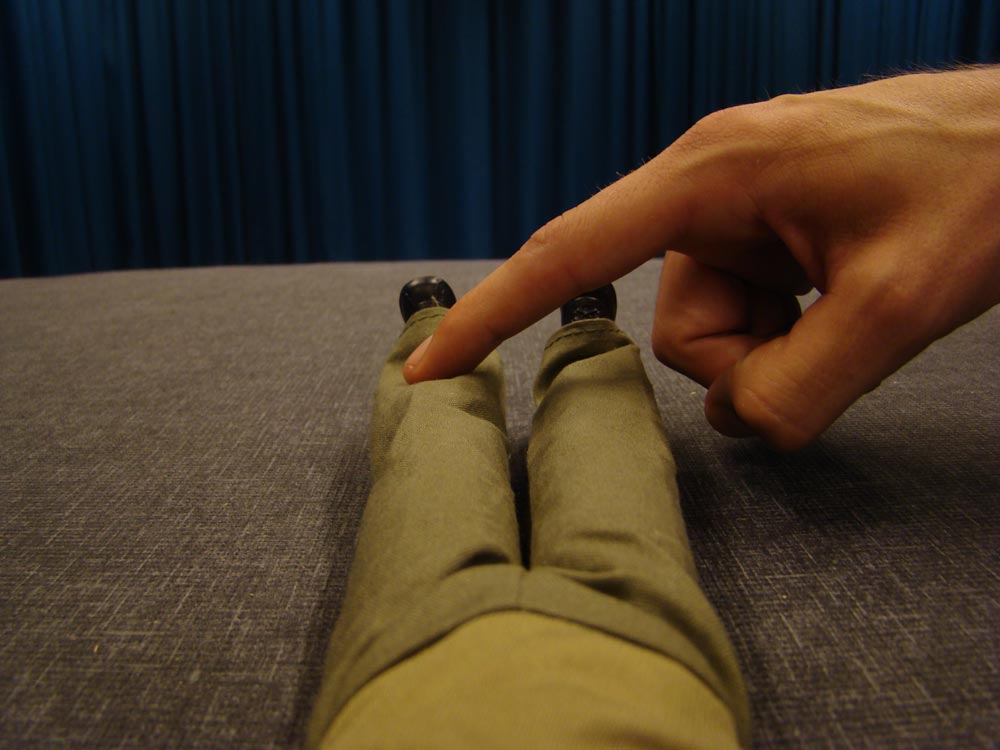Scientists Fool People Into Thinking They're Tiny or Giant

Fooling the brain so one experiences the world as either doll- or giant-size a la "Alice in Wonderland" is the latest trick from a mind-bending cadre of scientists in Sweden.
These findings help reveal how our bodies can influence how we perceive the world around us, and down the line, could lead to mind-controlled robotics.
Looking glass
To start with, volunteers lied down wearing video displays on their heads that made them see the bodies of the mannequins of various sizes, from about 1 to 13 feet (30 centimeters to 4 meters) tall.
As the volunteers looked down at "their bodies," they saw these mannequins get repeatedly poked in the leg with a rod; at the same time, their real bodies got prodded in the same place. This began the illusion that the body they saw was their own. [Eye Tricks: Gallery of Visual Illusions]

If real people then wandered into view when volunteers saw themselves as having miniature bodies, "even though we know just how large people are, the illusion makes us perceive other people as giants — it's a very weird experience," said researcher Henrik Ehrsson, a cognitive neuroscientist at the Karolinska Institute in Sweden who tried the experiment on himself. [Video of body-swapping experiment]
"The illusion is very strong," researcher Björn van der Hoort, a cognitive neuroscientist at the Karolinska Institute in Sweden, told LiveScience. "People know they are not the doll, but it feels like it. It is a sensory illusion. Everybody feels the illusion, and of course we did the experiments on ourselves. It is a crazy and funny phenomenon to be a small Barbie doll being touched by a gigantic hand that is bigger than your own body."
Sign up for the Live Science daily newsletter now
Get the world’s most fascinating discoveries delivered straight to your inbox.
Brain illusions
This research explores theories of how we understand our surroundings. The conventional view is that we perceive size and distance by interpreting different visual cues, such as the apparent size of an object and how it moves. However, this work shows that how large or small we feel we are can have a profound effect as well, with the body serving as a fundamental reference point that affects our perceptions.
When volunteers experienced tiny bodies as their own, they perceived themselves as living in a giant world, perceiving objects in view as larger and farther away than in reality. On the other hand, when participants had giant-sized illusions, they perceived objects as smaller and nearer.

"The most exciting part is the flexibility of the brain regarding ownership of a body," van der Hoort said. "Theoretically, there is no limit in size of that artificial body."
These researchers suggest that such illusions of body-swapping could have practical applications for such things as controlling robots.
"Robots are helpful in places where humans can not go — for example, to repair a leaking oil pipe deep under sea, or to repair a nuclear power plant if there is too much radiation, or doing micro-surgery inside a patient's body," van der Hoort said. "Until now, robots were controlled by levers and buttons, much like a computer game, but our findings show that one can feel [like they are] the robot, which would make the control much more intuitively and more efficient."
He cautioned, however, "there is still a big gap between theory and practice, and it is hard to predict a time schedule, but we think that in 10 to 15 years it should be possible to do this."
The scientists detailed their findings May 25 in the journal PLoS ONE.
Follow LiveScience for the latest in science news and discoveries on Twitter @livescience and on Facebook.










